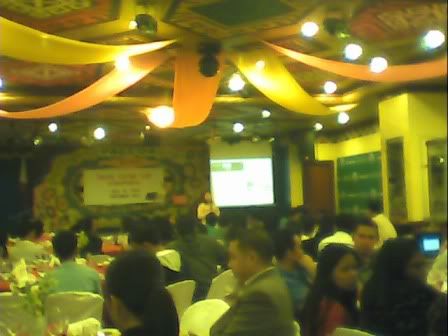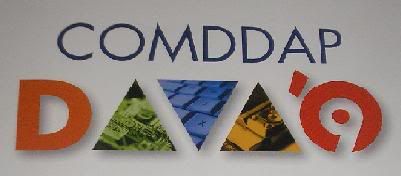Identify an information environment of your choice and write an essay to address the following questions:
• What should be your role within this environment?
• How can the principles of information organization and representation help you in performing this role?
• What are the challenges facing you in performing the role? How will you address these challenges?
To begin with, let me first define the word information. Information can be defined as facts, data or knowledge that has been acquired through study or communication. It can be sent or received by using any type of communication media. Through information, we have the knowledge about recent happenings in our surroundings, the latest market trends and the like and now that we are in the age of information technology, the most common source of information is the internet. Internet is an information technology infrastructure that is designed to interconnect hundreds of thousands of computers world wide. It is capable of sending and retrieving information from the different parts of the world in a matter of less than a minute depending on the speed of your internet connection and of your computer.
In the world of information technology, we have what we call Information Systems. Information system is the combination of the components of information technology which as we all know is the hardware and the software; and of the people or end users. According to what was written in the site www.elsevier.com, in the Information systems are the software and hardware systems that support data-intensive applications. Information Systems publishes articles concerning the design and implementation of languages, data models, algorithms, software and hardware for information systems.
Information environment refers to a group of people or an organization in the corporate world. It can also refer to the Management Information System or Information System department of a company. According to www.answers.com, information environment refers to the aggregate of individuals, organizations, or systems that collect, process, or disseminate information; also included is the information itself.
The information environment I chose is the Management Information System. This is where all the necessary and confidential information about the company is being secured or being managed. According to www.wikipedia.com, a management information system (MIS) is a subset of the overall internal controls of a business covering the application of people, documents, technologies, and procedures by management accountants to solve business problems such as costing a product, service or a business-wide strategy. Management information systems are distinct from regular information systems in that they are used to analyze other information systems applied in operational activities in the organization.
The challenges that the information environment I have chosen which is the Management Information System or the MIS department are keeping the company’s confidential information or data secured from any data thieves, moreover, protecting it from the damaging effects of unwanted computer programs like viruses, spywares, malwares and Trojans. Included in the protection of the company’s information is the maintenance of data or backing up of the databases of the company. It has been also a challenge for the Management Information System department or the Information Technology Department of a company to keep their databases up to date as always as possible. Another challenge is finding competent and dedicated Management Information System Staff or Information Technology professionals. Another challenge is deciding whether the company will opt for insourcing or the outsourcing of the business practices from the company. Another challenge is the creation of user – friendly applications needed by the company for their end users, having their end – users kept updated or taught about the system or application/s that they have created.
To address these challenges, it would be best if the company will support their Information environment by any means and at all times. The Management Information System department in return should be able to keep their staff dedicated in their work,
As an Information Technology student, I may become a part of the said information environment in the future. Align to this, I may be become one of their staff or even manage somehow the said environment because as an IT student it is the part of the field we are align with. To manage information system is part of the cycle and even so, to continue to grow, discover and find solution to the problems regarding information management system. To be part of a management information system department is a immense role to be consider.
Moreover, within this kind of information environment, the role that I preferred to be is being a MIS Supervisor. Since I am already belong on the field of IT industry because I am already an IT student right now and becoming an IT professional someday, I want to use this profession or my profession with this role though I know that MIS Supervisor is not an easy role. In fact, this is an exciting and a challenging role of a company which is the reason why I chose it. The MIS Supervisor will be responsible for day to day support of infrastructure computer equipment within the field locations. This position will provide guidance and support in installing and configuring software as well as administration of daily, weekly and monthly IT checklist. This position will involve the troubleshooting of infrastructure related problems including but not limited to, connectivity, operating systems, third party and in-house applications. This position will have supervisor responsibility over other Network Techs within their facility of operations, will drive the planning, reporting and analysis process through all areas of local operations.
The other duties and responsibilities of MIS Supervisor:
• Manage and coach the local IT support team.
• Coordination and Implementation of multiple IT projects.
• Supervise other IT staff in regards to project delegation, vacation coordination, scheduling.
• Troubleshooting of system problems to minimize down time.
• Installation and configuration of desktop computers.
• Installation and configuration of hardware accessories.
• Installation, maintenance and troubleshooting telecommunications.
• Preparation of project status reports for team manager.
• Take appropriate actions in case of IT equipment failure.
• Maintenance of Server Backups and tape management.
• Execution of daily, weekly and Monthly IT procedure checklist.
• All other duties assigned
Qualifications for this exciting position are:
• Associate or equivalent technical training required
• 10 + years working experience in the above requirements
• Strong working knowledge of Intel base computers and Servers.
• Strong working knowledge of Microsoft XP and Server 2003 operating systems.
• Strong working knowledge of Microsoft Active Directory.
• Must possess demonstrated sound judgement and decision making skills
• Must have demonstrated attention to detail
• Must possess outstanding organizational skills
• Willing to work flexible hours and shifts including weekends and 24X7 on call.
• Excellent Interpersonal Skills
• Ability to work in Cross Functional teams to accomplish business driven projects.
• Excellent communication skills verbal and written.
• Ability to lead by example.
• Consistently sets an example as a high performing team member.
• Has a positive and constructive approach when dealing with others and when faced with difficult taks.
• Uses influence and organizational dynamics effectively for positive results.
• Resolves more complex issues/problems while weighing risks and considering alternatives.
• Consistently demonstrates forward thinking when presenting ideas/solutions.
• Communicates effectively in highly visible situations.
• Sought out by peers for technical/operational information.
• Confronts problems quickly and escalates issues as appropriate.
• Takes the initiative to generate ideas/solutions.
These duties and responsibilities, experience requirements and qualifications are also can be as the challenges of being a MIS Supervisor because and it will measure the proportion of your effectiveness in this role and as how much and deep is your ability, skills, and knowledge on this field.
Reference:
www.answers.com
www.wikipedia.com
http://www.elsevier.com/wps/find/journaldescription.cws_home/236/description#description
http://www.medcohealth.apply2jobs.com/index.cfm?fuseaction=mExternal.showJob&RID=8876&CurrentPage=8
http://jobfunctions.bnet.com/abstract.aspx?docid=322715&tag=content;col1











